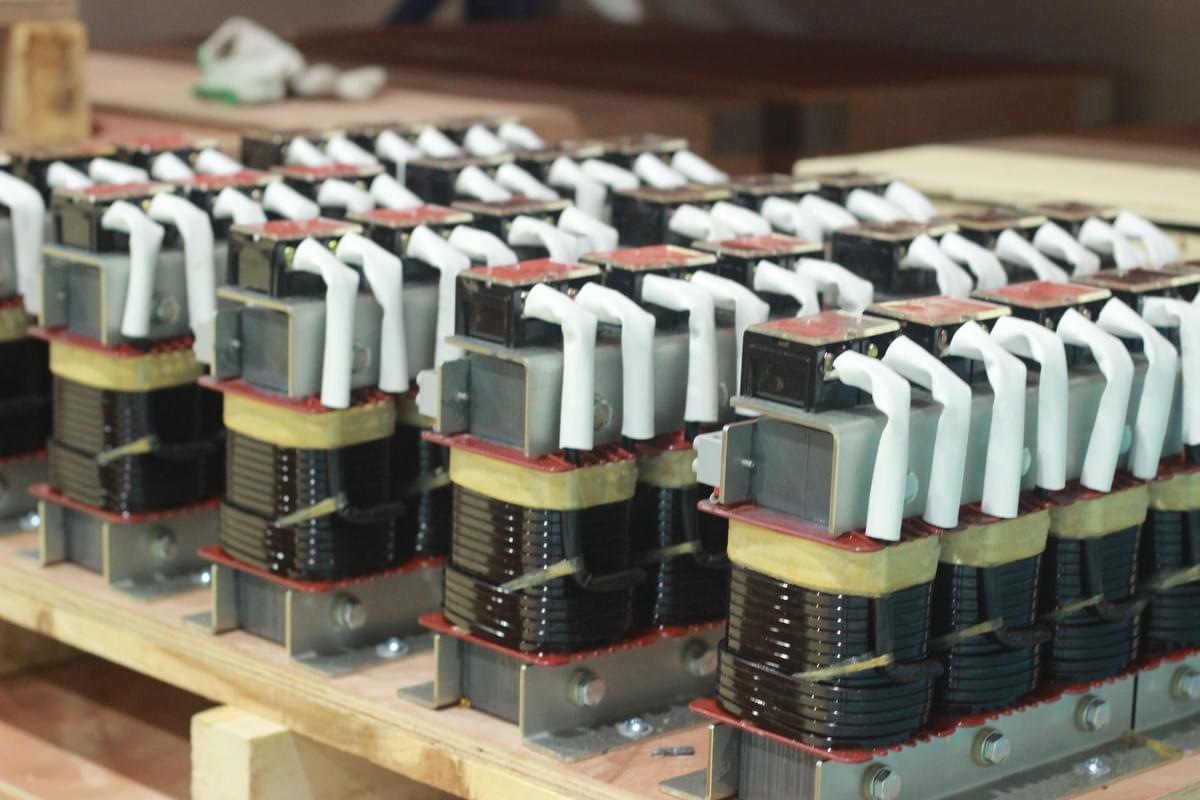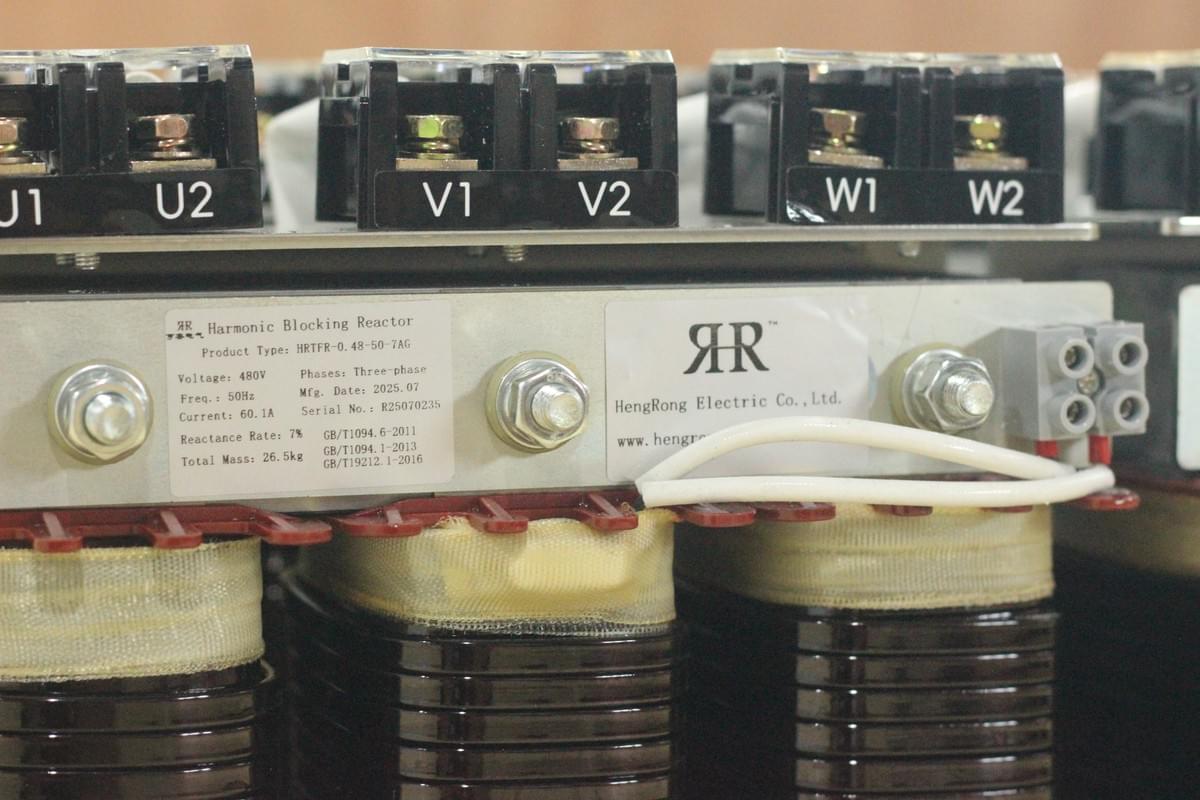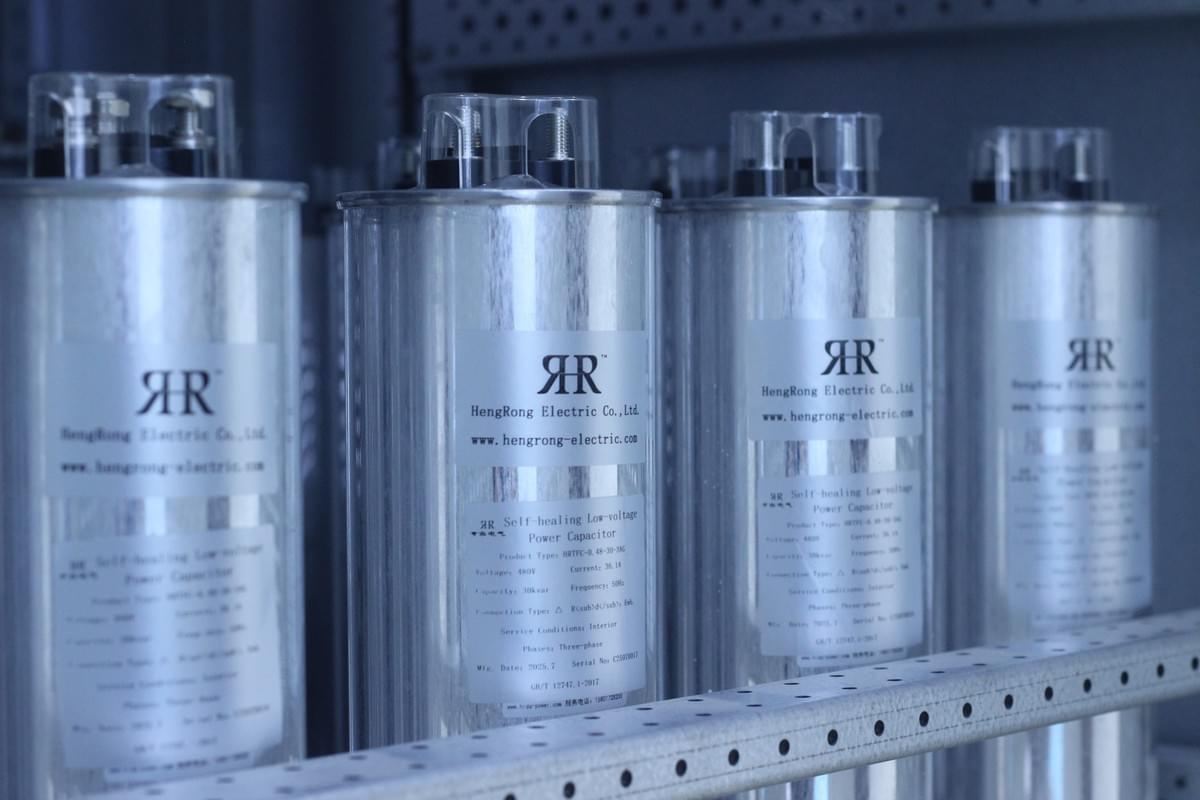In power systems, reactive power compensation is crucial for improving power supply quality and reducing energy consumption, and the performance of switching devices directly affects compensation effectiveness. This article analyzes different switching technologies, focuses on the application of magnetic latching relays in achieving zero-voltage switching and zero-current breaking, and introduces the advantages of related control systems and supporting cooling technologies.

I. Comparison of Types and Characteristics of Reactive Power Compensation Switching Devices
The core of reactive power compensation switching technology is to control the connection and disconnection of capacitors through switching devices. Different types of switches have significant differences in performance, cost, and applicable scenarios.
- AC Contactors
AC contactors are early widely used switching devices. Their working principle is to use auxiliary contacts in parallel with current-limiting resistors. During the closing process, the auxiliary contacts first pre-charge the capacitor through the current-limiting resistor, and then the main contacts achieve normal connection, thereby limiting the inrush current to below 20 times the rated current of the capacitor. The advantages of such devices are low price and high reliability, so they are widely used in traditional compensation devices. However, their disadvantages are obvious: the mechanical contacts have a limited service life and cannot adapt to frequent switching requirements, making them less applicable to scenarios with frequent load changes.
- Thyristor Switching Devices
Thyristor switching devices are based on zero-crossing triggering technology, which can conduct at voltage zero-crossing and cut off at current zero-crossing. Theoretically, they can achieve inrush current-free switching, and the number of triggering times is unlimited, making them suitable for loads with frequent changes and capable of quasi-dynamic compensation. However, thyristors have a voltage drop of about 1V when conducting, which will cause large losses in high-current scenarios. For example, when the rated current of each phase of a 100KVA compensation device is 145A, the total three-phase loss can reach 435W, so large-area heat sinks and ventilation fans are required for auxiliary heat dissipation. In addition, thyristors are extremely sensitive to voltage change rate (dv/dt) and are easily affected by voltage mutations such as operating overvoltage and lightning strikes, leading to false conduction and equipment damage. Moreover, their structure is complex and the cost is high.
- Composite Switches
Composite switch technology parallelizes thyristors and relay contacts, combining the advantages of both: thyristors realize voltage zero-crossing switching and current zero-crossing breaking to avoid inrush current problems; relay contacts carry continuous current to reduce thyristor losses. However, this design introduces two types of devices at the same time, resulting in increased technical complexity, which not only increases the cost but also improves the failure probability, and is prone to damage in practical applications.
- Magnetic Latching Relays
Magnetic latching relay is a new type of automatic switch. The core difference from traditional electromagnetic relays is that its normally open or normally closed state is maintained by permanent magnets, and the conversion of switch state only needs a pulse electrical signal of a certain width to trigger, without continuous power supply; to disconnect, a reverse pulse signal is needed (some dual-coil products control closing and opening through two coils respectively). This feature gives it the advantages of simple structure and low energy consumption, and can theoretically achieve zero-crossing switching. However, due to the discrete nature of mechanical actions, the action time of different relays is different, and the action time of the same relay may also be inconsistent, which becomes a major obstacle to its application in precise switching.

II. Principle of Zero-Crossing Switching for Magnetic Latching Relays
The core of magnetic latching relays to achieve precise switching is to detect the zero-crossing points of voltage and current, combined with advance control, to overcome the discreteness of mechanical actions and ensure that the capacitor is switched on and off at the ideal moment.
- Voltage Zero-Crossing Closing
Voltage zero-crossing closing is defined as: when the residual voltage of the capacitor after disconnection is equal to the power supply voltage, the relay is controlled to close to achieve switching on. The key is to accurately capture the voltage zero-crossing point and calculate the action advance. The specific process is: after the MCU receives the closing command (Tzt), it detects the voltage zero-crossing point (Tg), and according to the action delay (N ms) of the relay, triggers the closing signal N ms before the next zero-crossing point arrives, so that the relay closes accurately at the voltage zero-crossing moment (Tb = Tt + N ms). This process requires real-time acquisition of voltage waveforms through a voltage sampling circuit (such as resistance voltage division) to provide a basis for zero-crossing detection.
- Current Zero-Crossing Opening
Current zero-crossing opening refers to controlling the relay to open when the capacitor current crosses zero to avoid arcing when cutting off the current. Its principle is similar to voltage zero-crossing closing: after receiving the opening command (Tzg), detect the current zero-crossing point (Tg), calculate the advance trigger time according to the action delay, so that the relay opens at the current zero-crossing point (Tk = Tt + N ms). The current signal is sampled through a small current transformer (CT) connected in series on the secondary side of the relay to ensure detection accuracy.
III. Control System Design of Magnetic Latching Relays
To overcome the mechanical discreteness of magnetic latching relays, this paper proposes a control scheme based on MCU to achieve precise control from both hardware and software aspects.
- Hardware Composition
The system uses an 8-bit MCU as the main controller, equipped with voltage detection circuit (resistance voltage division sampling), current detection circuit (miniature CT), magnetic latching drive circuit and other modules, and selects a magnetic latching relay with a rated current of 60A as the executive component. The voltage detection circuit converts the AC voltage into a signal that can be processed by the MCU to identify the voltage zero-crossing point; the current detection circuit collects the capacitor current in real-time to provide a basis for current zero-crossing opening; the drive circuit outputs pulse signals according to the MCU command to control the closing and opening of the relay.
- Software Flow
After the program starts, it first completes system initialization (clearing the data memory or loading set values), then continuously samples voltage and current signals, and calculates the zero-crossing advance. When receiving a switching command, the MCU starts the corresponding drive circuit according to the preset algorithm: when closing, the relay is controlled to close according to the voltage zero-crossing advance; when opening, the relay is controlled to open according to the current zero-crossing advance. By analyzing each zero-crossing voltage measurement value through software algorithms, the zero-crossing point of the zero-crossing voltage is found, the time of the zero-crossing point is recorded, and the time advance of the magnetic latching relay switching command is determined. The current detection program is similar to the voltage detection program.

- System Advantages
The advantages of this control system are reflected in several aspects: first, the reliability is improved through the combination of hardware and software, realizing automatic judgment and processing of abnormal situations such as overvoltage, under-compensation, over-compensation, etc.; second, the control is flexible, which can track the load changes in real-time and maintain the power factor within the target range; third, it greatly reduces the equipment cost and improves the cost performance, while reducing manual maintenance intensity and improving power supply quality.

IV. Application of Air-Water Cooling System in High-Voltage Inverters
In addition to switching technology, the cooling system of high-voltage inverters is crucial for the stable operation of equipment. The air-water cooling system mentioned in this paper shows significant energy-saving and economic advantages.
- System Characteristics
The air-water cooling system adopts a layout where the cooling air flows from bottom to top, making the air flow and cooling water flow approximately countercurrent, improving cooling efficiency; at the same time, it has the characteristics of simple installation and few components, reducing maintenance requirements. It has strong adaptability to the environment, only needing to meet the conditions such as cooling water temperature ≤33℃, inlet water pressure 0.25~0.45Mpa, return water pressure 0.08~0.15Mpa, and water quality without large suspended solids, pH value alkaline (>7.2).
- Economic Benefit Analysis
Taking a project as an example, the energy-saving effect of the air-water cooling system is significant: before the transformation, 120-horsepower air conditioners were used for cooling, with annual power consumption of 772632kWh and electricity fee of 245,000 yuan; after the transformation, air-water cooling fans were used, with annual power consumption of 52920kWh and electricity fee of only 17,000 yuan, saving 228,000 yuan in electricity fees annually. In addition, it can save about 100,000 yuan in air conditioning maintenance and spare parts costs every year. The total investment of 700,000 yuan can be recovered within two and a half years, and net benefits will be achieved from the third year. At the same time, the system can improve the operating environment of equipment, reduce failure rates, extend the service life of inverters, and indirectly improve the stability of unit operation.
V. Summary
By comparing traditional switching technologies, this paper highlights the potential of magnetic latching relays in reactive power compensation: combined with MCU control, they can not only realize voltage zero-crossing closing and current zero-crossing opening, but also overcome mechanical discreteness, with the advantages of low cost and high reliability. The supporting air-water cooling system provides an efficient and energy-saving heat dissipation scheme for high-voltage inverters, further improving the economy and stability of the overall system. The application of these technologies provides a feasible path for the optimization of reactive power compensation in power systems, and helps to promote energy conservation and consumption reduction and the improvement of power supply quality.
Hengrong Electric Co., Ltd.
We specialize in providing high-efficiency reactive power compensation and power quality optimization solutions. With over 20 years of industry experience, our products excel in enhancing grid efficiency, reducing energy consumption, and ensuring system stability.
Our core products and services include:
Low-voltage Reactive Power Compensation and Power Quality Optimization:
Self-healing Capacitors:
Improve power factor, optimize grid power quality, and extend equipment lifespan with self-healing functionality.
Increased Safety Capacitors:
Designed for hazardous environments with combustible gases, providing high safety and explosion-proof features.
Tuned Reactors:
Effectively absorb grid harmonics, improve voltage waveform stability, and protect capacitors.
Composite and Thyristor Switches: Reliable capacitor switching devices with no inrush current, low noise, and stable operation.
High-voltage Reactive Power Compensation Solutions:
High-voltage Capacitors and Reactors: Enhance high-voltage grid stability, effectively compensate reactive power, and suppress harmonics.
Power Quality Governance:
Active Power Filters (APF):
Eliminate harmonics, improve power quality, and ensure system stability.
Static VAR Generators (SVG):
Provide dynamic reactive power compensation with fast and smooth system response.
Smart and Customized Solutions:
Offer smart power quality management controllers and intelligent compensation devices that adapt to complex grid environments, ensuring optimal operation.
Why Choose Hengrong Electric?
Industry Experience: We have extensive experience in power quality optimization, having delivered reliable solutions for numerous clients across various industries.
Customized Services: We provide tailored solutions based on specific client needs, ensuring the maximum benefits for every project.
Technical Assurance: Our products are internationally certified and feature advanced technology, ensuring high efficiency, reliability, and long-term stability.
